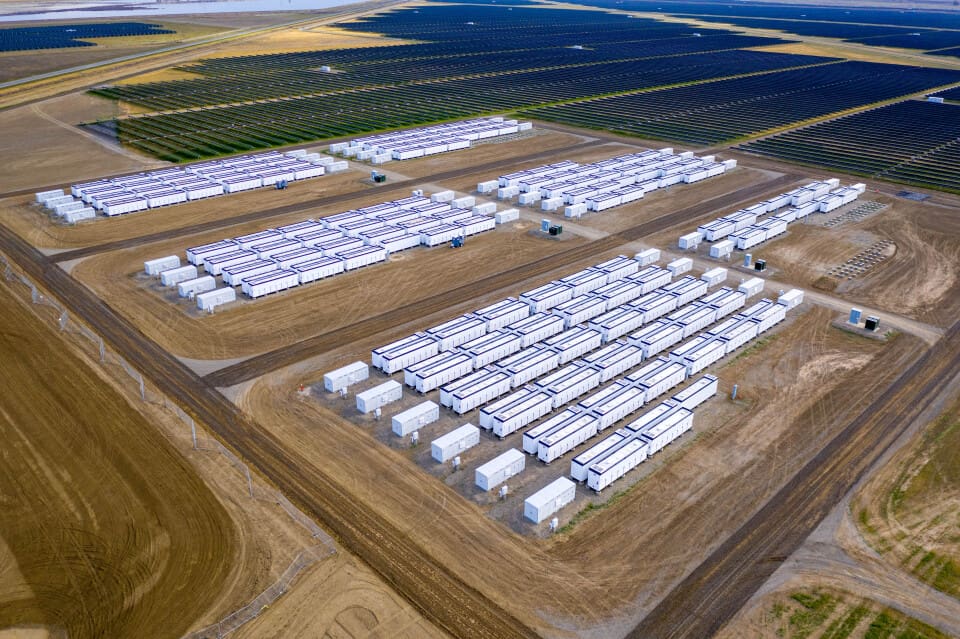
The Slate Solar + Storage Project does not simply act as a source of clean energy and resilient power; it serves as a compelling blueprint for unleashing America’s vast energy potential, benefiting countless communities across the nation.
Project Overview
The Slate Solar + Storage Project is one of the United States’ larger renewable energy facilities – combining a 300 MWac solar power facility with a 140.25 MW/561 MWh battery energy storage system (BESS), strategically located in Kings County in California’s Central Valley. This facility is a powerhouse of clean energy, producing approximately 806,000 MWh annually. This monumental output provides enough low-cost, clean energy to power approximately 126,000 typical California homes. The environmental impact is equally significant, as it avoids roughly 369,000 metric tons of CO2 emissions each year, equivalent to taking more than 86,000 gas-powered vehicles off the road.
Beyond energy generation, the expansive 2,100-acre PV facility integrates sustainable land management practices, offering shade and grazing opportunities for livestock, which naturally controls weed growth and reduces the need for landscape maintenance.
Development and Collaboration
The journey of the Slate project began with its initial development by Recurrent Energy, before being acquired by MN8 Energy. Construction commenced in 2021, and by April 2022, Slate had achieved commercial operation, marking its status as one of California’s largest integrated solar + storage projects. This ambitious undertaking also significantly benefited the local economy, with 90% of the project’s skilled workforce sourced from Kings County at its peak. The clean energy generated by Slate is distributed to five California-based organizations through power purchase agreements. The extensive battery storage array is crucial in advancing California’s ambitious 2045 carbon neutrality goals, while simultaneously enhancing overall grid stability. For these diverse organizations, Slate is instrumental in helping them achieve their net-zero carbon targets, delivering substantial cost savings during peak demand hours, and bolstering grid resilience in the face of ongoing climatic challenges.
(Infographic) Environmental and Economic Impact
The Slate project delivers significant and far-reaching environmental and economic benefits:
Environmental Wins
- Clean Electricity Production: The Slate project produces approximately 806 GWh of clean energy every year. This massive output is enough to power around 126,000 California homes.
- Emissions Reduction: The project is estimated to avoid roughly 369,000 metric tons of CO2 emissions annually, the equivalent of removing over 86,000 gas-powered vehicles from the road for a year.
- Sustainability Goals: The extensive battery storage array is a critical component in helping California achieve its 2045 carbon neutrality goals while simultaneously enhancing grid stability. For the organizations it serves, Slate plays a vital role in reaching their ambitious net-zero carbon targets.
- Site Management: The 2,100-acre PV park not only generates clean energy but also allows for sustainable livestock grazing. This practice provides shade for the animals, naturally controls weed growth, and reduces the need for landscape maintenance.
Economic Benefits
- Job Creation: At its peak, the project significantly boosted local employment, with 90% of its skilled workforce sourced directly from Kings County.
- Cost Savings: Slate delivers tangible cost savings to the organizations it serves, particularly during peak demand hours.
- Grid Resilience: The project substantially impacts grid resilience in the face of ongoing increases in energy demands and climatic challenges.
A Scalable Model
The Slate project is more than just a successful renewable energy endeavor; it serves as a powerful blueprint for similar initiatives nationwide. By transforming large tracts of land into high-performing renewable energy generation sites, it unequivocally demonstrates that clean energy can deliver a win-win scenario for all stakeholders involved.
Unlocking America’s vast, untapped clean energy potential hinges on this type of mutually beneficial model. It delivers critical energy independence, generates significant cost savings during peak demand, positively impacts communities, and acts as a catalyst for economic growth by creating local jobs.